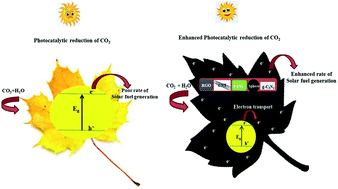Carbon-based photocatalysts for enhanced photocatalytic reduction of CO2 to solar fuels
Abstract
The photocatalytic reduction of CO2 into valuable solar fuels has progressively become significant due to its efficiency in concurrently addressing the global warming and energy crisis issues. Recently, the use of carbon-based photocatalysts has become more popular in this process due to their excellent electrochemical and physicochemical properties. The use of various carbon materials as supports for photocatalysts is highly favorable as carbon can tune photocatalytic activity in the visible light region and scavenge photogenerated electrons from the photocatalyst surface due to its high electrical conductivity. Apart from these highly beneficial effects, carbon materials also increase dispersion of the photocatalyst due to their high surface area and promote CO2 adsorption so that enhanced photocatalytic reactions can take place. Graphene, CNT, graphitic carbon nitride and conducting polymers have been used as excellent carbon supports over the years. However, due to the high recombination rate of photogenerated charge carriers and certain other weaknesses of pristine carbon, the photoconversion efficiency is too small for practical use. This review article presents various modifications to carbon-based photocatalysts that have been adopted by researchers to improve their photocatalytic performance. Finally, the challenges and prospects for future research in this subject, including some probable limitations, have been discussed. It is expected that this review may assist in the development of carbon-based nanomaterials as potential candidates for solar fuel conversion.

- This article is part of the themed collection: Sustainable Energy and Fuels Recent Review Articles


 Please wait while we load your content...
Please wait while we load your content...